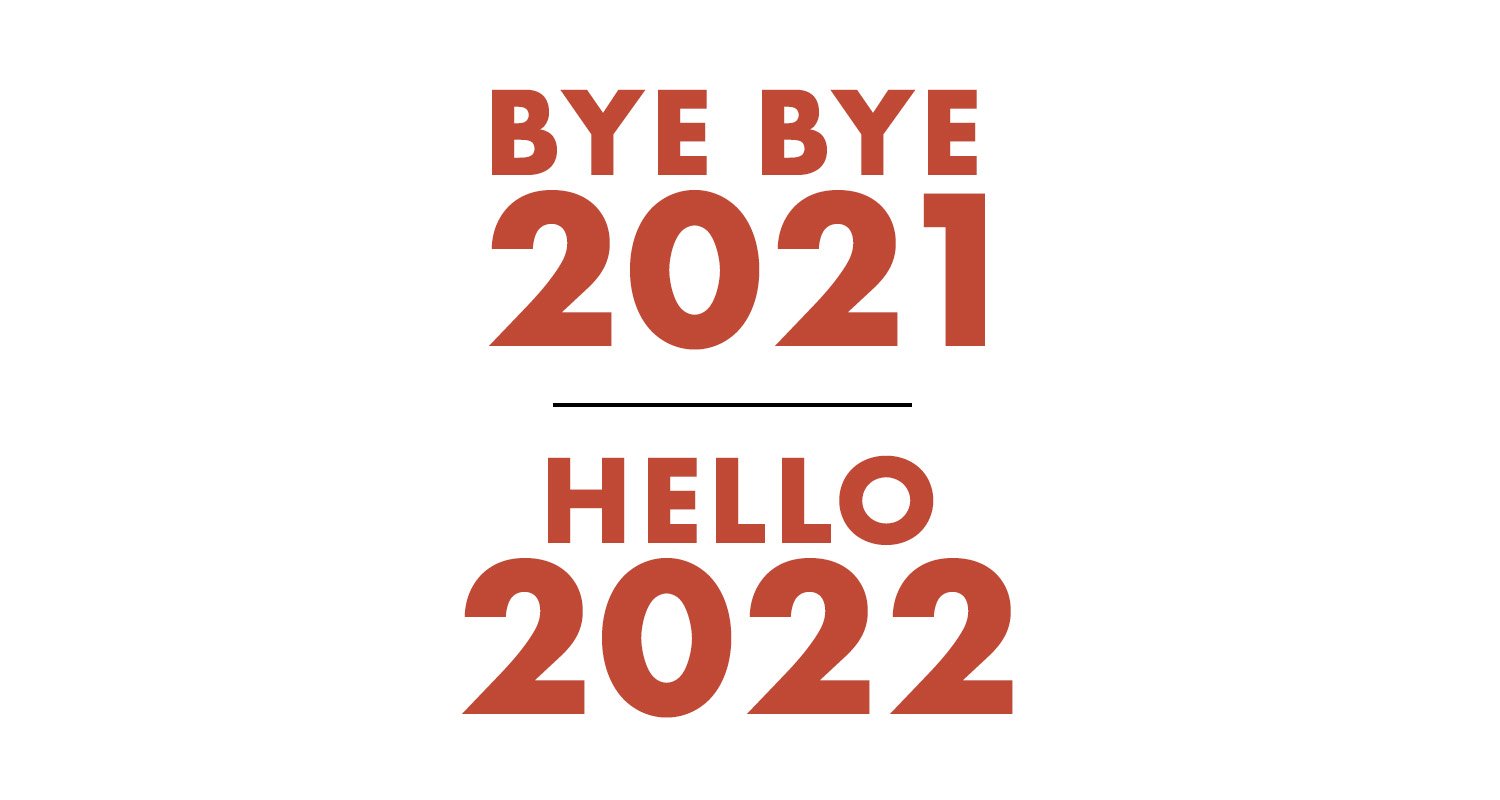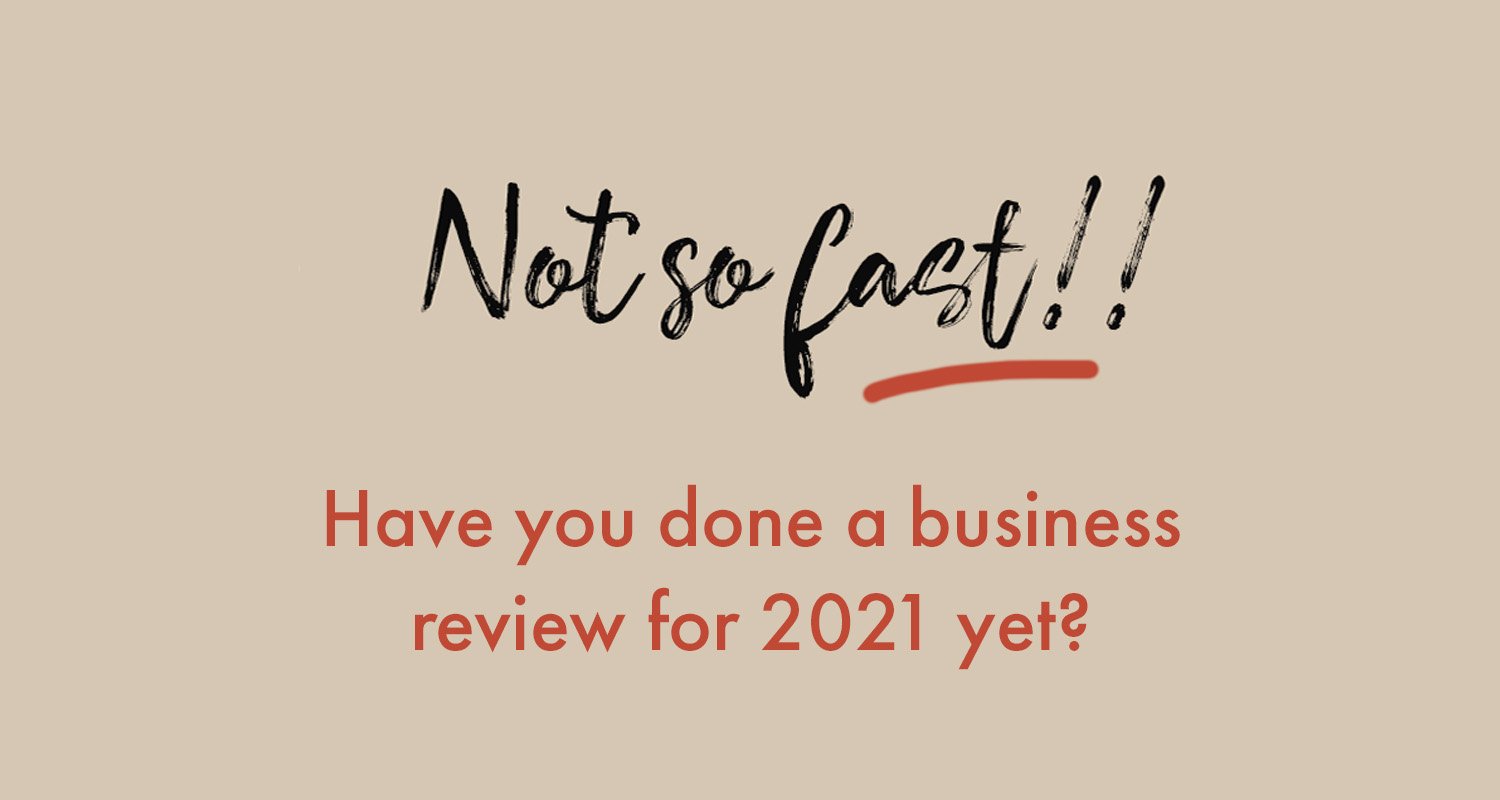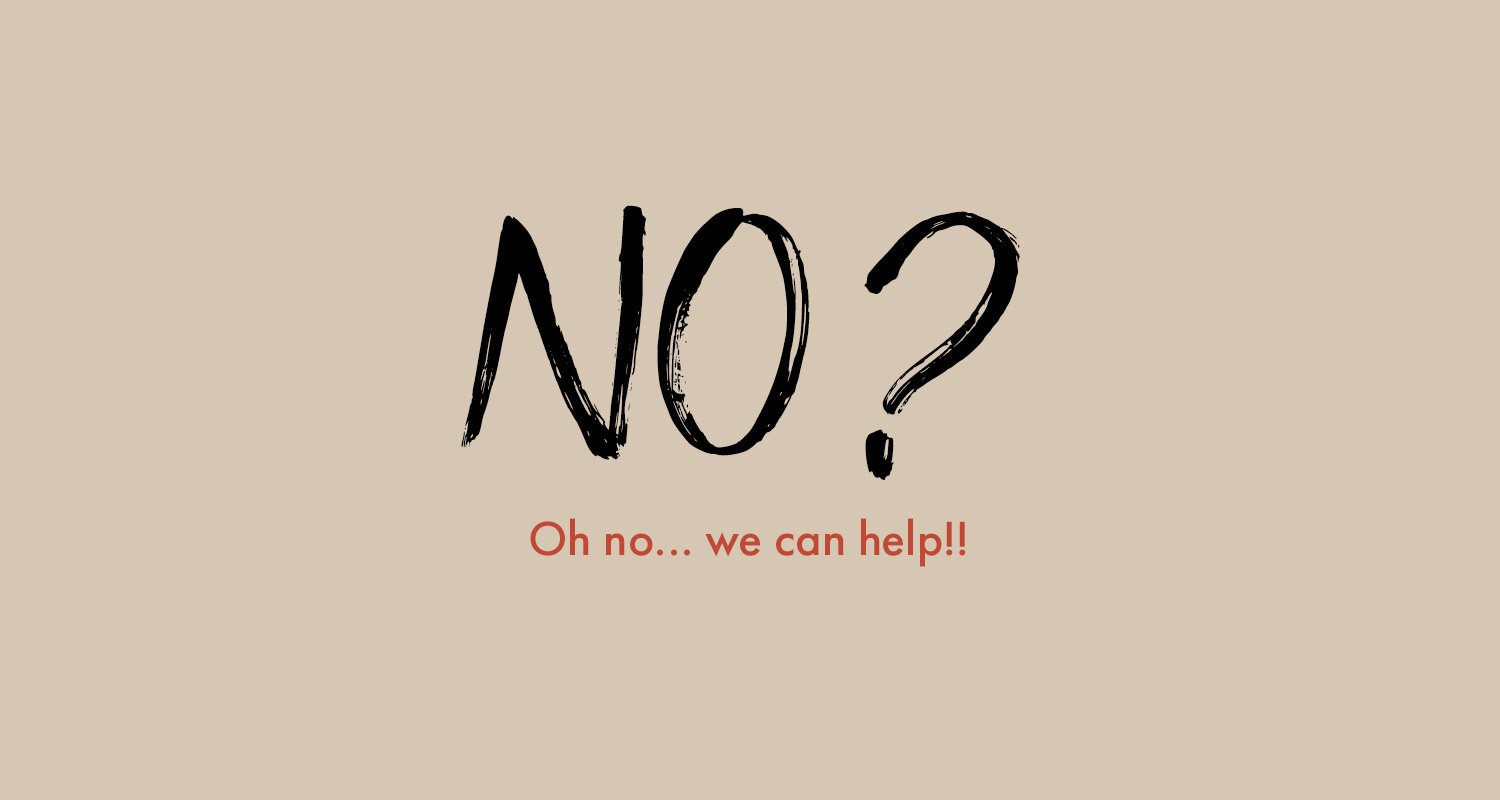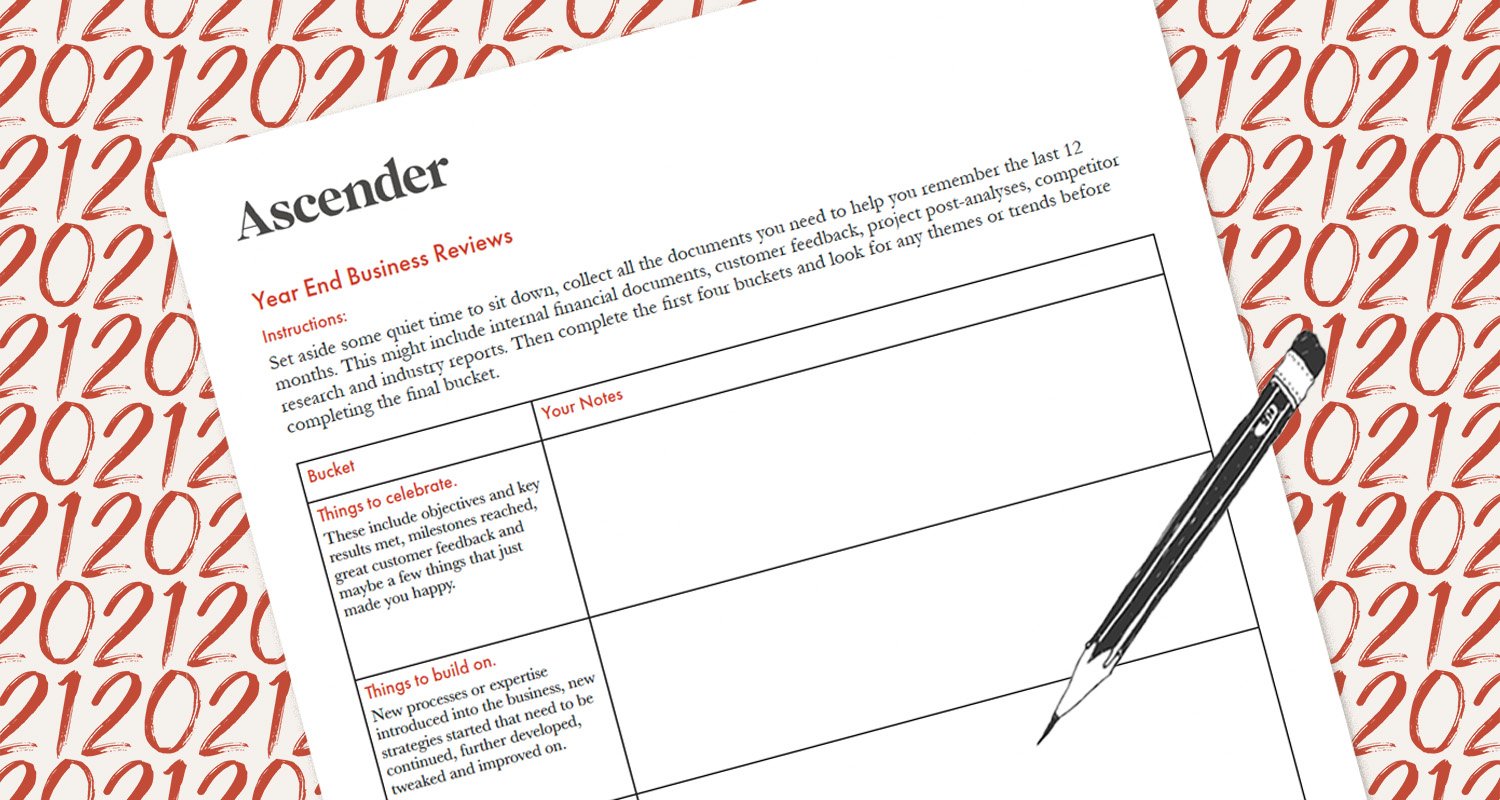Why review a year you’d rather forget?
Why small businesses need to do a business review.
For many small businesses 2021 was another challenging year. You might be so happy you got through it that you don’t dare look back.
Or maybe you had a busy and productive year (I hope you did!) and you have too many other things on your plate at the moment to bother with a review.
Or maybe you just don’t see the point because everything seems fine. Most days it’s you and your cat working away in your home office - you’re living it now so there’s no need to review.
Whatever the reasons you think an end of year business review is unnecessary, I urge you to reconsider, set aside some quiet time, make yourself a coffee or tea or if it was truly a horrendous year pour yourself a big glass and wine and reflect on the year that has just ended.
The benefits of a business review.
One of the biggest reasons small businesses falter is that they fail to plan and if you want to grow your business you need to ( 1.) understand where you are now ( 2.) where you want to go and ( 3.) how to get there.
The first step is to review your current situation. Chances are, when you do, you’ll…
Be reminded of successes you forgot or did not properly celebrate.
Spot opportunities to increase revenue.
Find ways to reallocate resources to better achieve goals.
See a few red flags that you will need to navigate next year.
Enter the new year with increased focus and determination.
How do do a year in review?
There are a number of different approaches to a business review - some are more rigorous and will require a concerted effort to compile and review quite a few documents including market trends, industry research, competitor analysis, internal financial documents, customer feedback and operational procedures.
The key areas you will want to consider are:
Your market performance and direction - how well you are performing measuring against key performance indicators, market opportunities and threats, new and existing competitors.
Your products and services - how well your current product mix is servicing your customers and what changes need to be made to better serve existing customers and attract new customers.
Operational matters - your premises, your systems and processes, technologies used, IT and quality control. Are there any internal issues that are holding your business back?
Financial matters - this is a review of your financial health, take a good look at your profit and loss statement and balance sheet reviewing sales growth, profitability, cash flow position and liquidity. Think about what investments you need to make and how these can be financed.
Your organisation and your people - your organisational culture, management structures, people, your recruitment, training, development and reward systems.
If this approach is interesting to you - here is a good framework adapted from a document by Business Link UK and then adapted again by Chamber of Commerce of Metropolitan Montreal before being adapted by yours truly. An edited copy can be found here.
Is there another approach? Maybe something shorter and quicker?
Yes there is. I’ve heard some solo entrepreneurs talk about doing a ‘calm’ business review. Rather than your business school approach - this review is a series of questions to get you to think about the year that was, what to celebrate and what to tweak in the year ahead.
Here are some questions Kerstin Martin asks in her ‘Calm Business Review’.
What are my headlines for 2021?
What news skills did I learn and how did they help me in my business?
What were the challenges and how did I meet them?
What went well, what engerized me?
What did I learn about myself and what does it teach me in 2022?
What are the 5 promises I make to my business in 2022?
You can find a link to Kerstin’s Calm Business Review workbook here.
I also like Inc.com’s six questions from their ‘Guide to a Smart Year End Business’ review.
They suggest you disconnect yourself emotionally by approaching the process with curiosity, rather than with fear and criticism. Try to go into this process with a positive mindset and look forward to the results — because no matter which way it goes, you're about to make it better.
Inc.com suggested questions are:
What are my (our) achievements?
How did they impact our growth?
What did we learn in 2021 and how did it support our growth?
What were our biggest disappointments?
Did we implement a strategy to pivot or constructively address the disappointments?
Did we have unexpected expenditures and how can we plan better for next year?
A third approach… The Ascender Creative way that combines the best of above.
Finally, here is my approach. I mix a little bit of each and add my own twist - because in the end you need a process that works for you!!
I create five buckets and into them I put:
Things to celebrate.
Things to build on.
Things to learn from.
Things not to repeat.
Things to aim for.
So taking them one by one…
Things to celebrate - these include objectives and key results met, milestones reached, great customer feedback and maybe a few things that just made you happy.
This year I am celebrating launching a new business (Ascender Creative) in the middle of a pandemic.
Things to build on - new processes, new skills or expertise, the implementation of new strategies that need to be continued, further developed, tweaked and improved on.
As a new business, I have focused on developing a streamlined customer onboarding and onboarding process that makes it easy and enjoyable for customers to work with me and ensures that I am working as efficiently and effectively as possible. In 2022 I will continue to tweak and improve it.
Things to learn from - important learnings from projects and customers, competitors, industry research etc.
At the end of each client project I try and do a quick post analysis looking at what went well, what didn’t go so well, what could be improved on based on both my experience and feedback from the customer.
Examples of some changes I am considering making as a result are introducing “website in a week” package and adding a social media launch kit.
I am also always looking to see what competitors in the field are doing and looking for ideas to steal.
Finally, I take inspiration from larger start-ups. One of my favourite podcasts for learning about start-ups and their journey is How I Built This.
Things not to repeat - habits, situations, processes, types of products or clients that are not good for you or the business, that waste time and money, make everyone miserable or simply need to be outsourced.
The thing I don’t want to repeat is that tricky fee conversation - you know the one where the client tells you’re too expensive and wants your fee to be based on their budget rather than the value you deliver. This is a whole separate blog post.
For the purposes of this post however, in 2022 I refuse to substantially lower my price just because it doesn’t match someone’s budget - either a client sees the value I deliver and is willing to pay a fair market rate for it or doesn’t and in that case they might not be the right client for me or I might not be the right agency for them. It’s better to be upfront and do so in a professional way that leaves the door open if they want to come back later.
Things to aspire to - These are your high level goals and objectives for next year. If you are a solo entrepreneur you might want to add a few personal work goals as well - e.g. work only certain hours or certain days a week or take all of August off.
Did you find this helpful?
In our next article we’ll talk about business plan. All this work will make writing it a snap - I promise.




